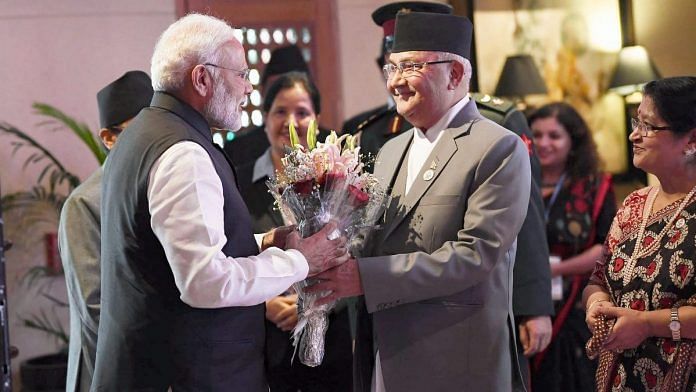New Delhi: India is all set to sign a memorandum of understanding (MoU) with Nepal to cooperate on wildlife management, biodiversity conservation and knowledge exchange in related fields.
Sources in the Ministry of Environment, Forests and Climate Change (MoEFCC) have told ThePrint that a final draft of the MoU, which has been in the works for a few months now, is being reviewed by the Ministry of External Affairs (MEA) and will subsequently be sent to the Nepal government for its signature.
“The MoU is basically an agreement for transboundary landscape management, handling animal migration and conservation of species like rhinos, tigers and elephants,” an official in the MoEFCC said.
“We are going to pool in our resources and create peace parks for the wildlife where forest staff from both the countries may have a joint task force aimed at conservation of biodiversity and wildlife,” the official added. The peace parks will cover the Kanchenjunga Landscape, sources said.
Also read: Sandwiched between Xi, Putin, Imran in Bishkek, Modi learnt an important political lesson
‘Deal a precursor to good relations between India and Nepal’
Since there is a long border between India and Nepal that covers several wildlife habitats, it is desirable that both the countries pool in resources for their conservation.
“Several animal corridors run across the boundaries of both the countries…So in order to ensure that there is proper corridor connectivity, there has to be proper coordination between the two countries,” another MoEFCC official said.
Further modalities of the agreement will be chalked out once the MoU is signed by both the countries, he added.
While the move is aimed at environmental conservation, it is bound to strengthen ties between the two nations as well, he added.
“This will be a precursor to good relations between India and Nepal. It will lead to peace and stability throughout the region…Something like this has not been tried in many parts of the world. It is a very novel idea,” the official said.
According to sources in the ministry, similar MoUs are being worked out with Bhutan, Sri Lanka and Bangladesh as well.
Sources said the transboundary agreement with Nepal was first proposed by National Tiger Conservation Authority (NTCA). The MoEFCC then drafted the MoU and sent to Nepal. However, the Nepal government was of the view that the scope of the MoU be broadened to include all wildlife and biodiversity conservation.
The MoEFCC then added the Nepal government’s suggestions in the MoU and sent it to the MEA for its approval.
Also read: Mandarin now a compulsory language in Nepal’s schools as China foots the bill
India’s focus on landscape approach
The bilateral agreements between India and its neighbouring countries are part of India’s emphasis on landscape approach to wildlife management, said an Indian Forest Service (IFS) officer.
According to a United Nations Development Program report, “Landscape approach focuses on large, connected geographic areas to allow for recognition of natural resource conditions and trends, natural and human influences, and opportunities for resource conservation, restoration and development.”
The IFS officer said the Indian government laid emphasis on this approach in its National Wildlife Action Plan, 2017.
“According to this approach, you focus on the holistic conservation of wildlife, and it is not limited to certain patches,” the officer said. “Key to it is the pooling of various resources.”
Also read: India rejects Pakistan media reports on talks, says first environment must be terror-free







Very pleasant memories of a visit to the Chitavan National Park.